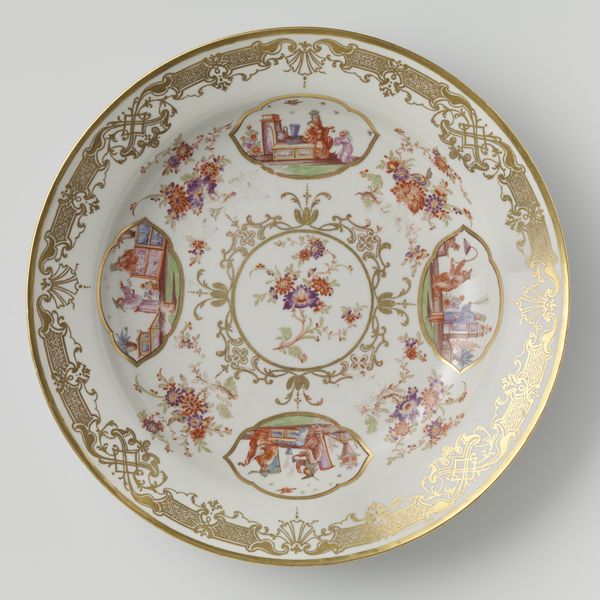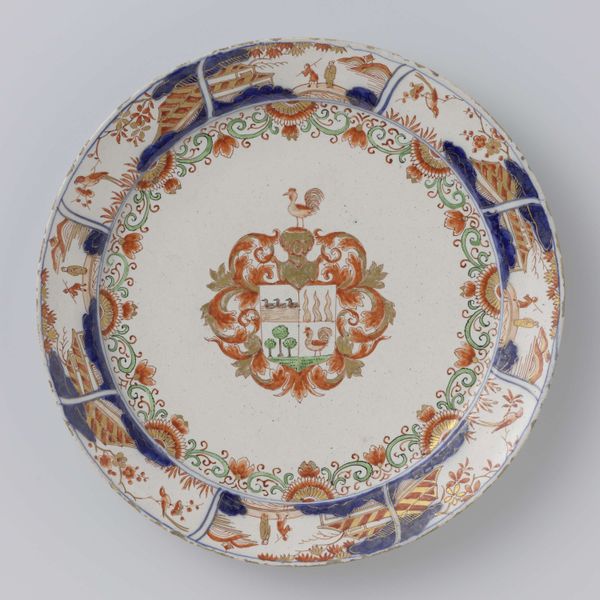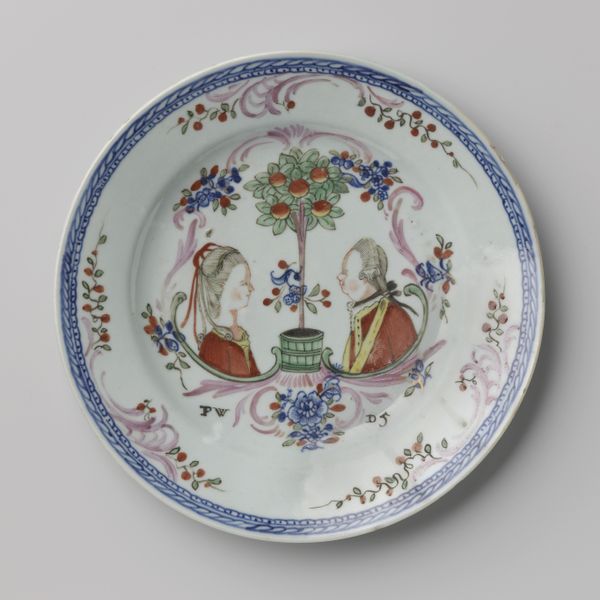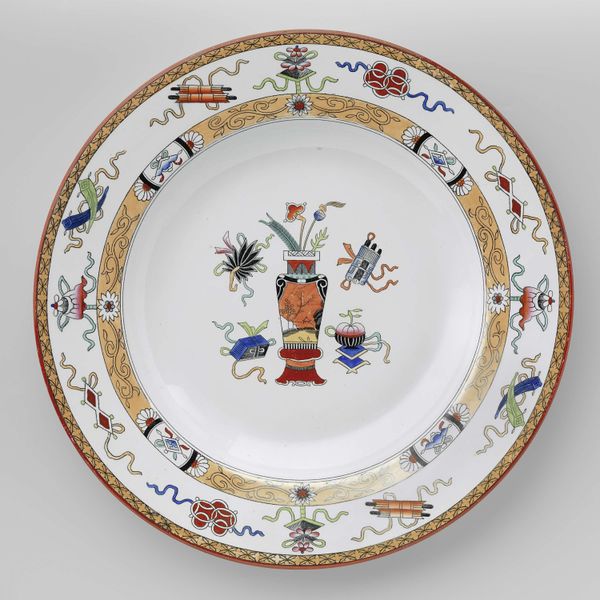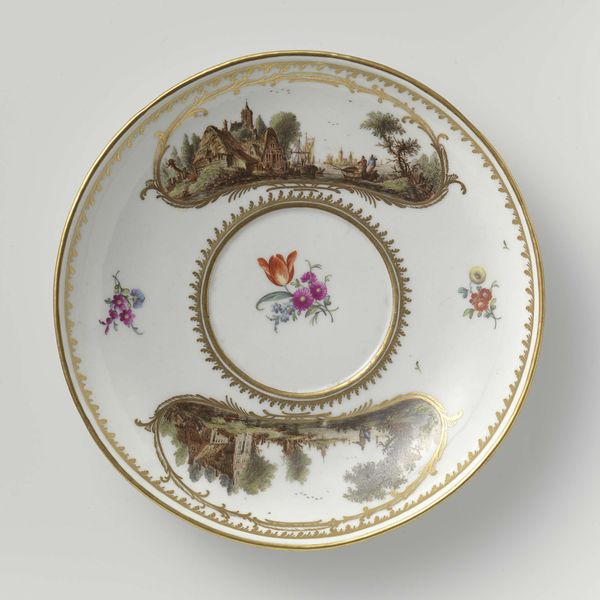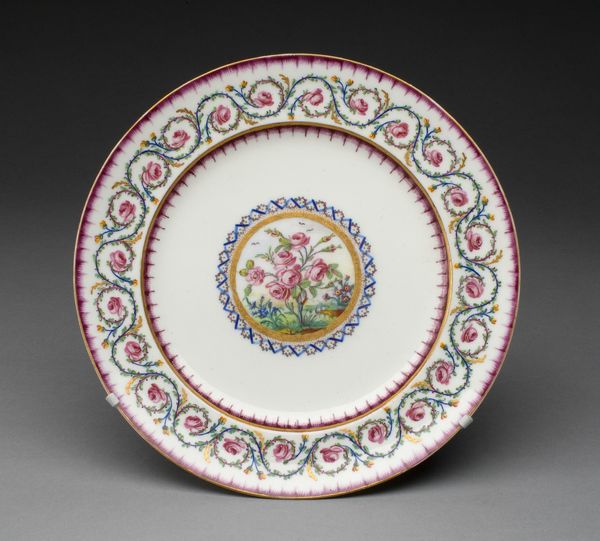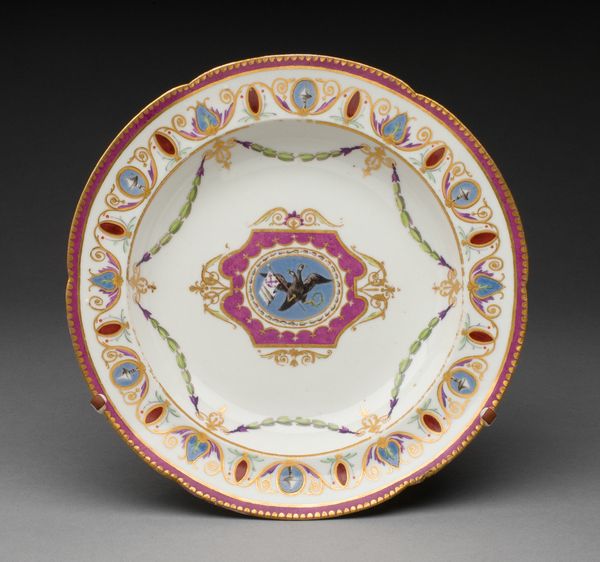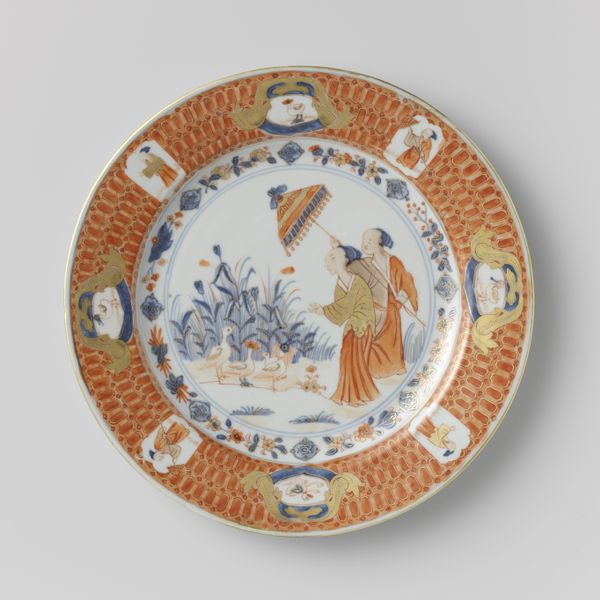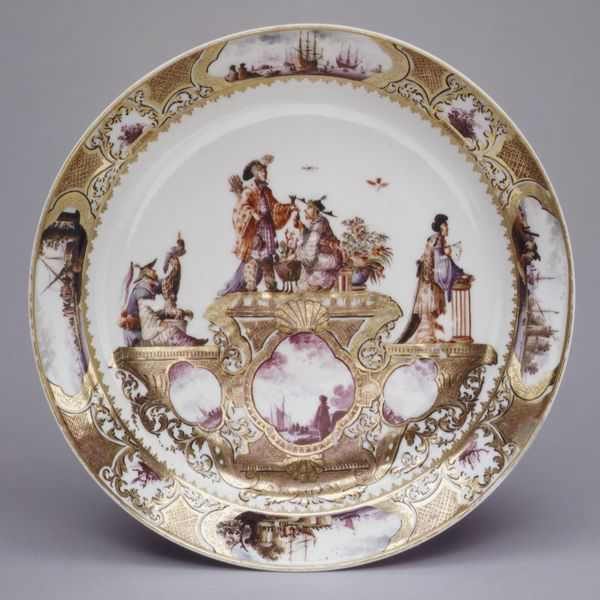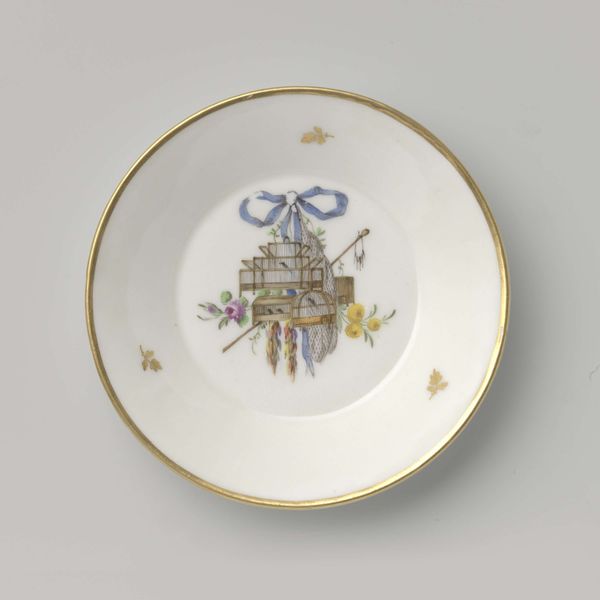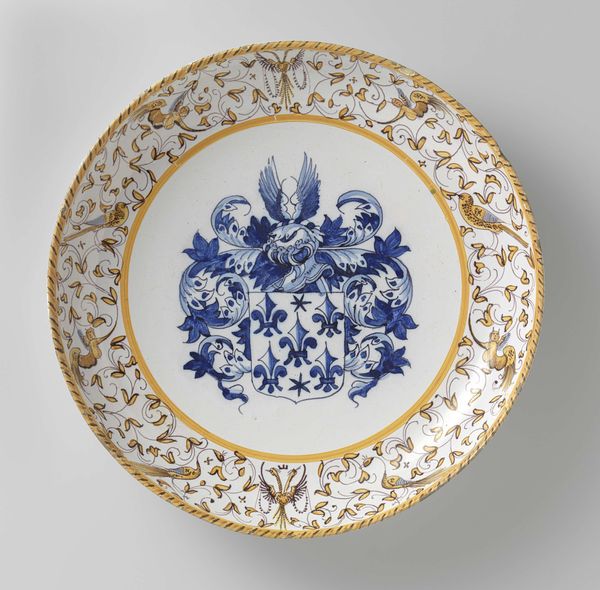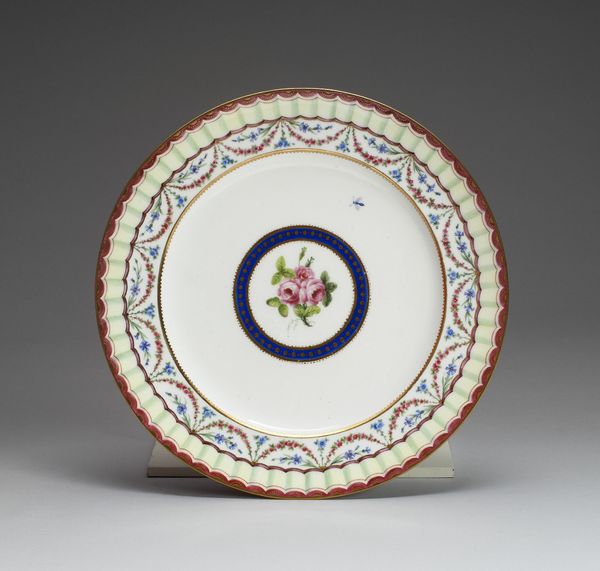
painting, ceramic, earthenware
#
pottery
#
painting
#
asian-art
#
ceramic
#
earthenware
#
ceramic
#
earthenware
#
decorative-art
Dimensions: height 4.2 cm, diameter 28 cm, diameter 15.8 cm, weight 573 gr
Copyright: Rijks Museum: Open Domain
Editor: We're looking at a ceramic earthenware plate, made around 1730-1735. The piece is striking, not just for its vibrant colors, but for the prominent squirrel emblem crowned with a regal motif, set against what appears to be an attempt at Asian-inspired decoration. How do you interpret the juxtaposition of European heraldry and Asian aesthetics on this object? Curator: This plate offers a fascinating glimpse into the complexities of cultural exchange during the 18th century. The combination of European heraldic symbols, specifically the crowned squirrel, with chinoiserie elements speaks volumes about colonial desire and power dynamics. Who do you think might have commissioned a piece like this and for what purpose? Editor: Maybe someone from the European elite trying to display wealth and global awareness? Like they’re incorporating “exotic” motifs into their own established symbolism? Curator: Exactly. It's not simply an aesthetic choice; it's a visual assertion of dominance. The appropriation of Asian motifs—the pagodas, the floral designs—within a European framework serves to "domesticate" the foreign, framing it as something acquired, possessed, and ultimately, controlled. Consider also that the squirrel, an animal associated with gathering and hoarding, is literally crowned, suggesting a link between natural resources and imperial power. What does that tension mean to you? Editor: That’s so interesting. The act of collecting – whether it’s natural resources or artistic styles –becomes a form of control and domination. It really reframes how I see decorative arts. I hadn’t thought of it in those terms. Curator: Right! This plate serves as a reminder that even seemingly innocuous objects can reveal much deeper truths about the politics of representation and the legacy of colonialism.
Comments
rijksmuseum about 2 years ago
⋮
The arms are those of the Sichterman family. This plate belongs to one of many services ordered by Jan Albert Sichterman of Groningen. He worked for the Dutch East India Company from 1716 to 1744 and was very influential in the silk and cloth trade in Bengal. He eventually returned to the Netherlands, where he lived in a splendid house on the Ossenmarkt in Groningen.
Join the conversation
Join millions of artists and users on Artera today and experience the ultimate creative platform.
